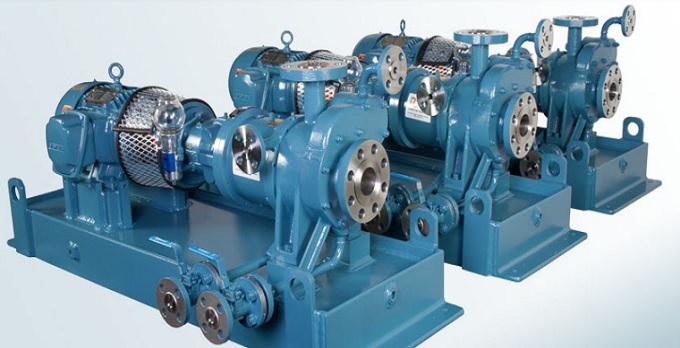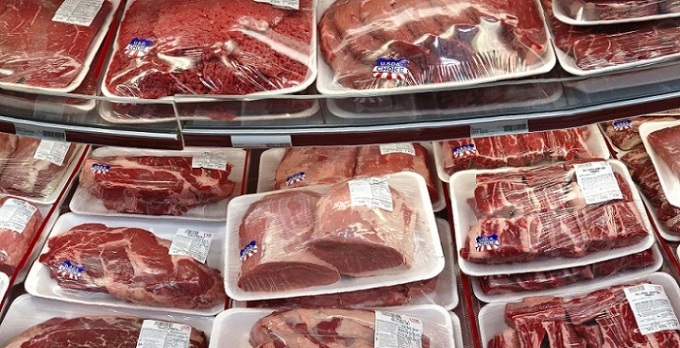Ken Research has announced its distribution on, “Construction in Vietnam, Key Trends and Opportunities to 2021”
which provides detailed market analysis, information and insights into
the Vietnamese construction industry. The report furnishes historical
and forecast valuations of the construction industry in Vietnam using
construction output and value added methods. It includes segmentation by
sector (commercial, industrial, infrastructure, energy and utilities,
institutional and residential) and by project type and showcases
breakdown of values within each project type, by type of activity (new
construction, repair and maintenance, refurbishment and demolition) and
by type of cost (materials, equipment and services).
It gives a critical insight into the impact of industry trends and issues, and the risks and opportunities they present to participants in the Vietnamese construction industry along with the profiles of the leading operators in the Vietnamese construction industry.
It identifies and evaluates market opportunities using standardized valuation and forecasting methodologies and well assesses the market growth potential at a micro-level with over 600 time-series data forecasts. It furnishes analysis of equipment, material and service costs for each project type in Vietnam along with key construction industry issues, including regulation, cost management, funding and pricing.
It enables the users to formulate and validate strategy using critical and actionable insight and assesses business risks, including cost, regulatory and competitive pressures and most importantly evaluates competitive risk and success factors.
The industry’s development was aided by economic recovery, coupled with government investment in infrastructure and residential construction, and the ascended issuance of building permits. Also, the Socio-Economic Development Plan (SEDP) for 2011–2015, under which the government invested in the development of industrial facilities, supported the review-period growth.
The Vietnamese construction industry recorded a growth rate of 9.1% in 2016, estimated at constant 2010 US dollar exchange rates. This was predated by annual growth rates of 10.8% and 7.6% in 2015 and 2014 respectively. In August 2016, the government introduced a new rural building program for 2016–2020, with a motto to build schools, hospitals, roads, water-treatment facilities and other related infrastructure in rural areas by 2020.
As stated by Vietnam's Railway Development Strategy 2020, the government aims to raise the share of passenger and freight transport through railways from 0.5% of the total passenger transport market share and 1.0% of the total freight transport in 2015 to 13.0% in terms of passenger transport and 14.0% in terms of freight transport by 2020.
The government plans for increasing the country's seaport capacity under the new master plan for seaport system development to 2020 and for this; it has launched the 2020 Broadband Plan in January 2016, for augmenting economic development and growth. The main aim of the government is creation of investment opportunities, and ensuring social and economic inclusion.
The government aims to raise Vietnam’s housing area per capita by 2020. Consequently, the government is planning to construct 1 million affordable houses by 2020 and it has launched various social housing programs like the housing for poor rural families program, low-rent housing for industrial zone employees and low-income urban social housing-local government. The government focuses on the manufacturing sector with a target to attain middle-income status and turn into a fully industrialized country by 2020. Accordingly, it is planning to help new startups and augment industries through various programs and initiatives like the Mekong Business Initiative, the Finland-Vietnam Innovation Partnership Progra and the National Technology Innovation Fund.
The industry is further expected to expand over the forecast period (2017–2021), because of investments in transport infrastructure, energy and utilities and affordable housing projects. Along with, government’s investment in public infrastructure and educational healthcare buildings as part of the 2016–2020 Development Plan is forecasted to supplement future growth.
The industry's output value is anticipated to post a forecast-period CAGR of 7.78% as compared to the CAGR of 8.33% recorded during the review period and the construction industry is forecasted to benefit from the government's plans to ameliorate the living conditions in rural areas.
Topics Covers in the report
https://www.kenresearch.com/manufacturing-and-construction/infrastructure/construction-vietnam-key-trends-opportunities/82332-97.html
Related links:
https://www.kenresearch.com/manufacturing-and-construction/infrastructure/construction-argentina-key-trends-2019/3440-97.html
https://www.kenresearch.com/manufacturing-and-construction/infrastructure/construction-mexico-key-trends-2019/3441-97.html
Contact:
Ken Research
Ankur Gupta,
Head Marketing & Communications
query@kenresearch.com
+91-124- 4230204
www.kenresearch.com
It gives a critical insight into the impact of industry trends and issues, and the risks and opportunities they present to participants in the Vietnamese construction industry along with the profiles of the leading operators in the Vietnamese construction industry.
It identifies and evaluates market opportunities using standardized valuation and forecasting methodologies and well assesses the market growth potential at a micro-level with over 600 time-series data forecasts. It furnishes analysis of equipment, material and service costs for each project type in Vietnam along with key construction industry issues, including regulation, cost management, funding and pricing.
It enables the users to formulate and validate strategy using critical and actionable insight and assesses business risks, including cost, regulatory and competitive pressures and most importantly evaluates competitive risk and success factors.
The industry’s development was aided by economic recovery, coupled with government investment in infrastructure and residential construction, and the ascended issuance of building permits. Also, the Socio-Economic Development Plan (SEDP) for 2011–2015, under which the government invested in the development of industrial facilities, supported the review-period growth.
The Vietnamese construction industry recorded a growth rate of 9.1% in 2016, estimated at constant 2010 US dollar exchange rates. This was predated by annual growth rates of 10.8% and 7.6% in 2015 and 2014 respectively. In August 2016, the government introduced a new rural building program for 2016–2020, with a motto to build schools, hospitals, roads, water-treatment facilities and other related infrastructure in rural areas by 2020.
As stated by Vietnam's Railway Development Strategy 2020, the government aims to raise the share of passenger and freight transport through railways from 0.5% of the total passenger transport market share and 1.0% of the total freight transport in 2015 to 13.0% in terms of passenger transport and 14.0% in terms of freight transport by 2020.
The government plans for increasing the country's seaport capacity under the new master plan for seaport system development to 2020 and for this; it has launched the 2020 Broadband Plan in January 2016, for augmenting economic development and growth. The main aim of the government is creation of investment opportunities, and ensuring social and economic inclusion.
The government aims to raise Vietnam’s housing area per capita by 2020. Consequently, the government is planning to construct 1 million affordable houses by 2020 and it has launched various social housing programs like the housing for poor rural families program, low-rent housing for industrial zone employees and low-income urban social housing-local government. The government focuses on the manufacturing sector with a target to attain middle-income status and turn into a fully industrialized country by 2020. Accordingly, it is planning to help new startups and augment industries through various programs and initiatives like the Mekong Business Initiative, the Finland-Vietnam Innovation Partnership Progra and the National Technology Innovation Fund.
The industry is further expected to expand over the forecast period (2017–2021), because of investments in transport infrastructure, energy and utilities and affordable housing projects. Along with, government’s investment in public infrastructure and educational healthcare buildings as part of the 2016–2020 Development Plan is forecasted to supplement future growth.
The industry's output value is anticipated to post a forecast-period CAGR of 7.78% as compared to the CAGR of 8.33% recorded during the review period and the construction industry is forecasted to benefit from the government's plans to ameliorate the living conditions in rural areas.
Topics Covers in the report
- Vietnam Construction Industry Research
- Construction Sector Trends Vietnam
- Vietnam Construction Market Forecast
- Global Construction Industry Research
- Vietnam Commercial construction industry
- Vietnam residential construction market
- New Construction Projects Vietnam
- Vietnam construction equipment market
- Vietnam Construction Industry growth,
- Vietnam Construction Industry future
- Vietnam Construction Industry size
- Vietnam Construction Industry trends
- Vietnam Construction Industry analysis
- Vietnam Construction Industry research
- Vietnam Construction Industry
https://www.kenresearch.com/manufacturing-and-construction/infrastructure/construction-vietnam-key-trends-opportunities/82332-97.html
Related links:
https://www.kenresearch.com/manufacturing-and-construction/infrastructure/construction-argentina-key-trends-2019/3440-97.html
https://www.kenresearch.com/manufacturing-and-construction/infrastructure/construction-mexico-key-trends-2019/3441-97.html
Contact:
Ken Research
Ankur Gupta,
Head Marketing & Communications
query@kenresearch.com
+91-124- 4230204
www.kenresearch.com






